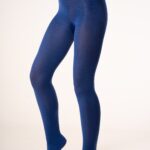Manufactured Fibers
In the past, these fibers have been referred to as man-made, artificial or synthetic, but the term manufactured is the current accepted terminology. They can be manufactured from natural fibrous materials such as wood or bamboo pulp (rayon) or synthesized from chemicals (e.g., nylon, polyester). Manufactured fibers are relatively new on the textile scene with the earliest appearing around the beginning of the twentieth century. The most common manufactured fibres are polyester, nylon, acrylic, acetate and elastane. Manufactured fibres can be altered in their weight, texture, colour and performance more easily than natural fibres and thus offer endless possibilities. They fall into three categories: petroleum-based polymers, cellulose-based polymers and bio-based polymers.



Petroleum-Based Polymers
Most manufactured fibers are petroleum-based polymers, essentially a kind of plastic, that is extruded through a spinneret (like a showerhead) to form fibers that can then be used as-is, or cut, crimped, or combined with other yarns. They are generally non-biodegradable, and can release microscopic fibers when laundered. However, the textiles industry is striving to reduce the environmental impact of manufactured fibres, and in some cases, manufactured fibres now have less impact on the environment than some pesticide-intense natural fibres.
Polyester
Polyester is by far the most commonly produced and consumed fiber in the world, nearly double the production of cotton. Polyester is durable, easy care, and resists wrinkling. It is not absorbent, but dries quickly. It is used in clothing of all types, often combined with other fibers such as cotton to maximize the benefits of both fibers. Microfiber and fleece are types of polyester.


Nylon
Nylon is a polyamide and was the first truly manufactured fiber, replacing the use of silk in hosiery in the late 1930s and in parachutes during WWII. It is also a polymer that can be extruded like polyester but can also be made into a film. It is strong, lightweight and resists tearing. It is used in outerwear such as windbreakers, hosiery, rope, toothbrush bristles, and fishing line.



Acrylic
Acrylic is a useful replacement for wool as it is lightweight and warm and can be made to have a woolly texture. It is used for inexpensive and easy-care sweaters and outerwear, upholstery, and carpeting. It is one of the least breathable fabrics, and is prone to pilling.



Elastomers
Elastomers, such as elastane (branded as Lycra or spandex) are polyurethane elastomeric fibres that have excellent stretch and recovery. Adding just a small percentage of elastane fibre to a fabric gives it stretch, even in a woven material. Stretch jeans owe their existence to elastomers.
Cellulose-Based Polymers
Plant fibers from such sources as wood and bamboo can be made into a pulp and extruded in the same way as petroleum-based polymers. This process was discovered in the mid- to late-1800s, long before the discovery of petroleum-based polymers. They are sometimes called semi-synthetics because of their natural source, but the process of converting them to a pulp is chemical-intensive and so they are not considered to be natural fabrics in the way that other plant-derived fibers such as cotton and linen are.
Rayon
Rayon, or viscose, is made from wood pulp and was first introduced as artificial silk in the 1890s. Because it comes from wood pulp, but is chemically processed, it is considered a “semi-synthetic.” It can be made to imitate silk, cotton, linen or wool.


Acetate
Acetate is now more frequently used as a synthetic version of silk. It can be made to be crisp or soft and drapey. Many prom and bridesmaid dresses are made from acetate.


Bamboo
Bamboo can be made into a semi-synthetic fabric in a similar process to rayon, using bamboo pulp instead of wood pulp. It can also be made into fibre the same way that flax is made into linen, as a natural fibre without the use of chemicals to dissolve the pulp. The amount and type of chemicals used in the production of bamboo vary according to the manufacturer, so bamboo fabrics have varying degrees of impact on the environment.
Bio-Based Polymers
While not necessarily or inherently biodegradable or environmentally friendly, biobased polymers hold much hope for more sustainable textile production in the future. Biopolymers can be created from bacteria, kelp, algae, mycelium, orange fiber, pineapple leaves etc., and many are biodegradable and can even be used to nourish the next generation of their kind.

